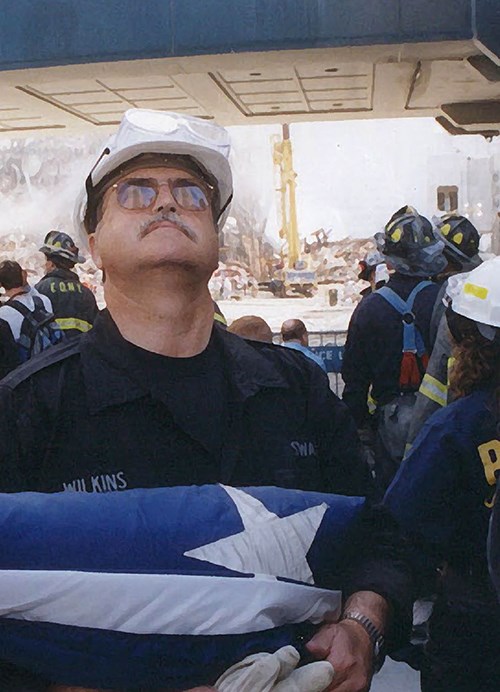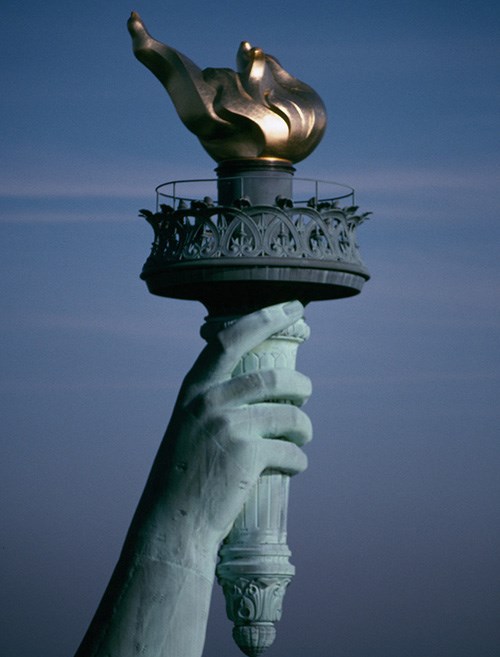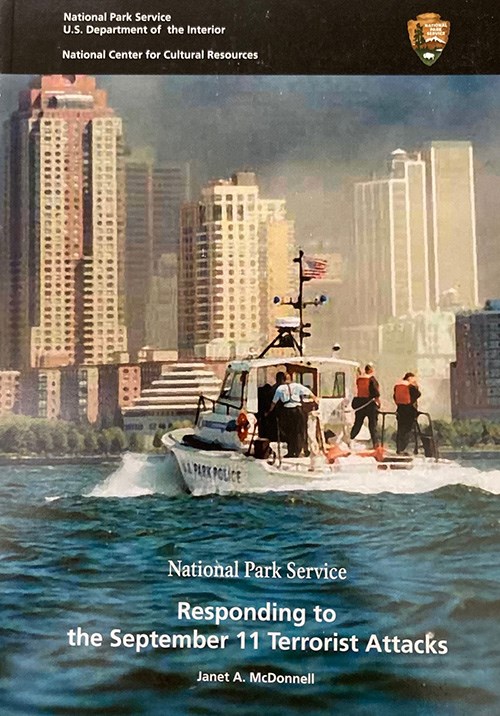Last updated: September 9, 2021
Article
September 11, 2001, NPS Oral History Project
Warning: This article describes the attacks of September 11, 2001, and their aftermath, which some may find disturbing.

An Unprecedented Attack
On the morning of September 11, 2001, terrorists launched an unprecedented attack on the United States using hijacked commercial airliners. At 8:45 am American Airlines Flight 11 carrying 92 people from Boston to Los Angeles crashed into the North Tower of the World Trade Center in New York City. Eighteen minutes later, United Airlines Flight 175, with 65 passengers and crew also headed toward California, hit the South Tower. At 9:40 am ET American Airlines Flight 77 carrying 64 people and 30,000 pounds of aviation fuel for its flight from Dulles to Los Angeles crashed into the Pentagon. American Airlines Flight 93 with 40 passengers and crew on their way to San Francisco crashed in Shanksville, Pennsylvania, at 10:10 am ET.
A total of 2,996 people were killed by the attacks on September 11, including 343 firefighters and paramedics, 23 New York City police officers, 37 Port Authority police officers, and citizens of 78 countries. Thousands more were injured that day. As of 2020, over 18,000 people who performed rescue, recovery, demolition, and debris clean up in the aftermath have suffered from 9/11-related cancers. Many survivors and responders continue to suffer both physical and mental health effects as a result of their experiences.

Reaffirming the Meaning of National Parks
The terrorist attacks and their aftermath also had a profound impact on national parks, the National Park Service (NPS), and its employees. In 2004, NPS Historian Janet A. McDonnell noted that the attacks reaffirmed the importance of parks as symbols of American values and culture, and that the events, traditions, and values represented by parks and historic sites took on a new resonance for the American public and for employees struggling to come to grips with the nature and scope of the attacks. The critical role the NPS plays in protecting the places that Americans cherish was reaffirmed both within and outside the bureau. At the same time, the attacks exposed that icon parks such as the Statue of Liberty, Liberty Bell, Washington Monument, and other landmarks were potential targets.

Documenting NPS Impacts and Response
Shortly after the terrorist attacks, NPS historians began an oral history project to record the memories and perspectives of staff who experienced the events and their aftermath. Sixty interviews were conducted in 2001 and 2002 with about 100 staff from the US Park Police; National Parks of New York Harbor including Statue of Liberty and Ellis Island; Arlington House, the Robert E. Lee Memorial; National Mall and Memorial Parks; and other parks as well as the NPS Washington and regional offices.
The interviews documented the NPS response to the attacks at the park, regional, and national levels, beginning with the initial response. They also considered the actions taken by NPS staff, and why. Broader impacts of the attacks on NPS operations and allocation of budget resources were also examined. Many interviews described the impacts of the attacks on NPS employees and sought to understand how the attacks may have affected the way staff viewed their jobs and the way Americans viewed national parks. Finally, the project hoped to capture "lessons learned" and to better understand the NPS response and what it says about its values and responsibilities. NPS Historian Janet A. McDonnell used the information gleaned from the oral histories, internal documents, and other sources to prepare the compelling 2004 report National Park Service Responding to the September 11 Terrorist Attacks.
Copies of the interviews, transcripts, and report are archived with the NPS History Collection at Harpers Ferry Center. In commemoration of the 20th anniversary of September 11, 2001, all 60 transcripts and McDonnell’s report from the September 11, 2001, NPS Oral History Project were shared online so all may read, reflect, and remember those who were lost and those who carry on in their absence.
Tags
- arlington house, the robert e. lee memorial
- catoctin mountain park
- colonial national historical park
- ellis island part of statue of liberty national monument
- flight 93 national memorial
- george washington memorial parkway
- manassas national battlefield park
- national mall and memorial parks
- national parks of new york harbor
- shenandoah national park
- statue of liberty national monument
- 9/11
- nps oral history
- 9/11/2001
- nps history
- hfc
- harpers ferry center
- nps history collection
